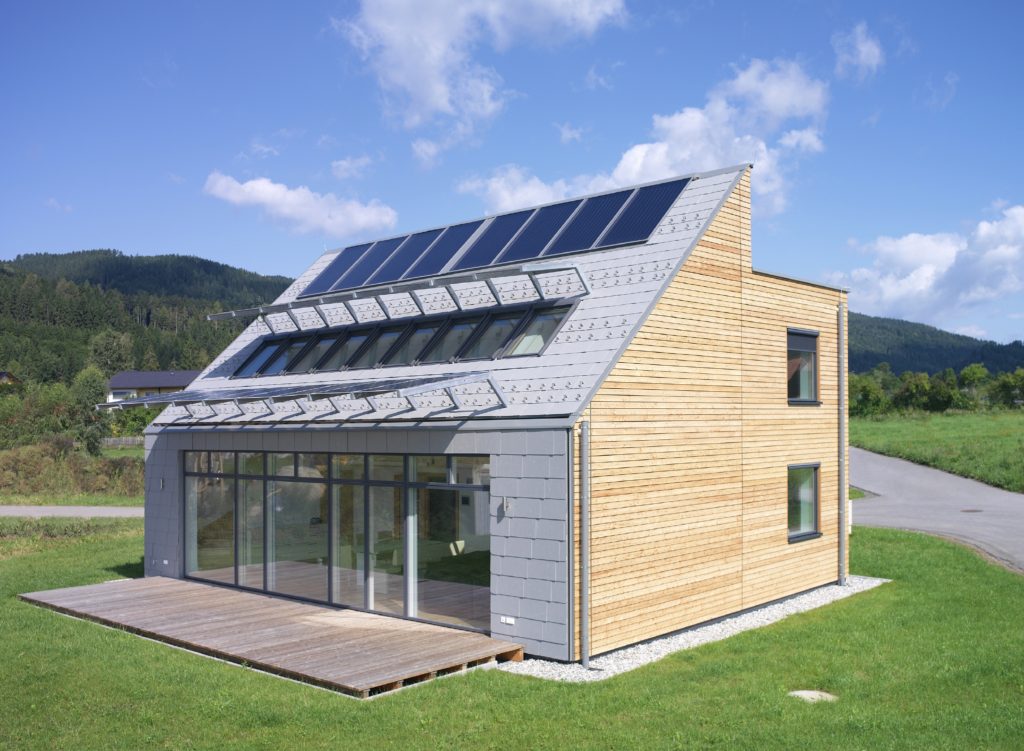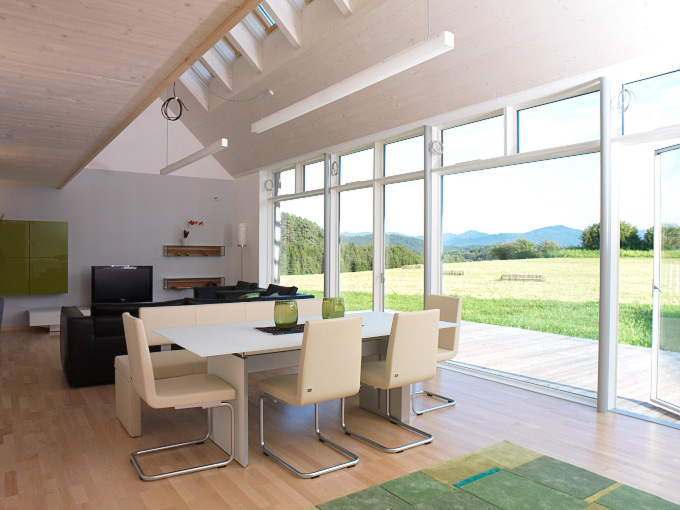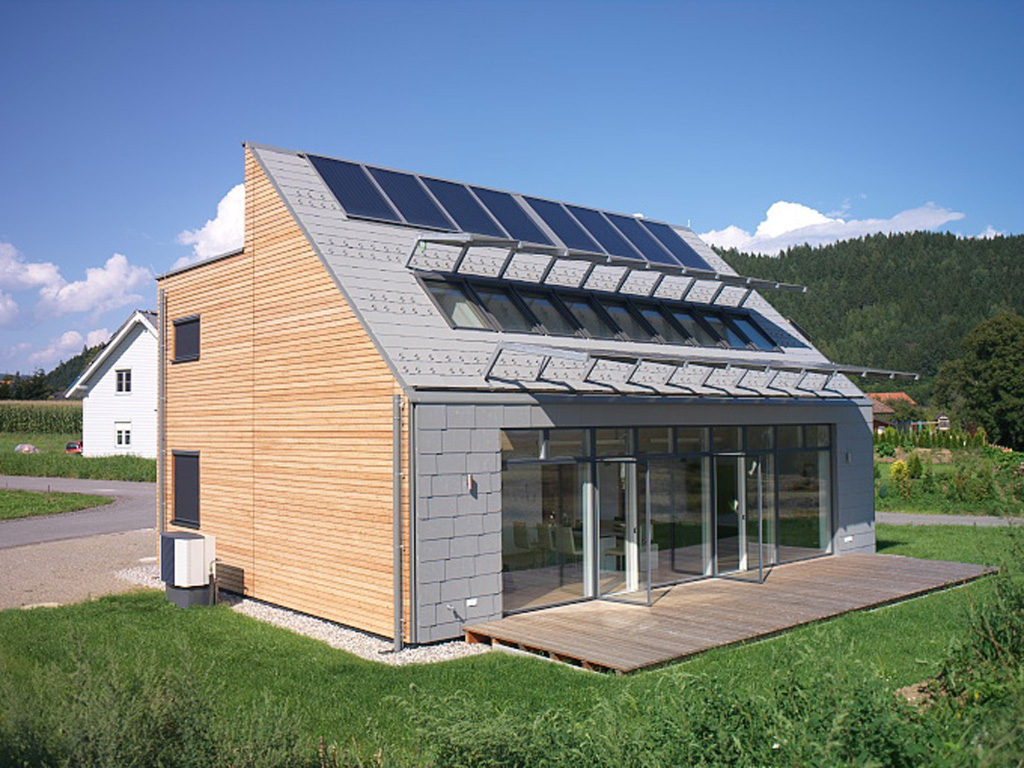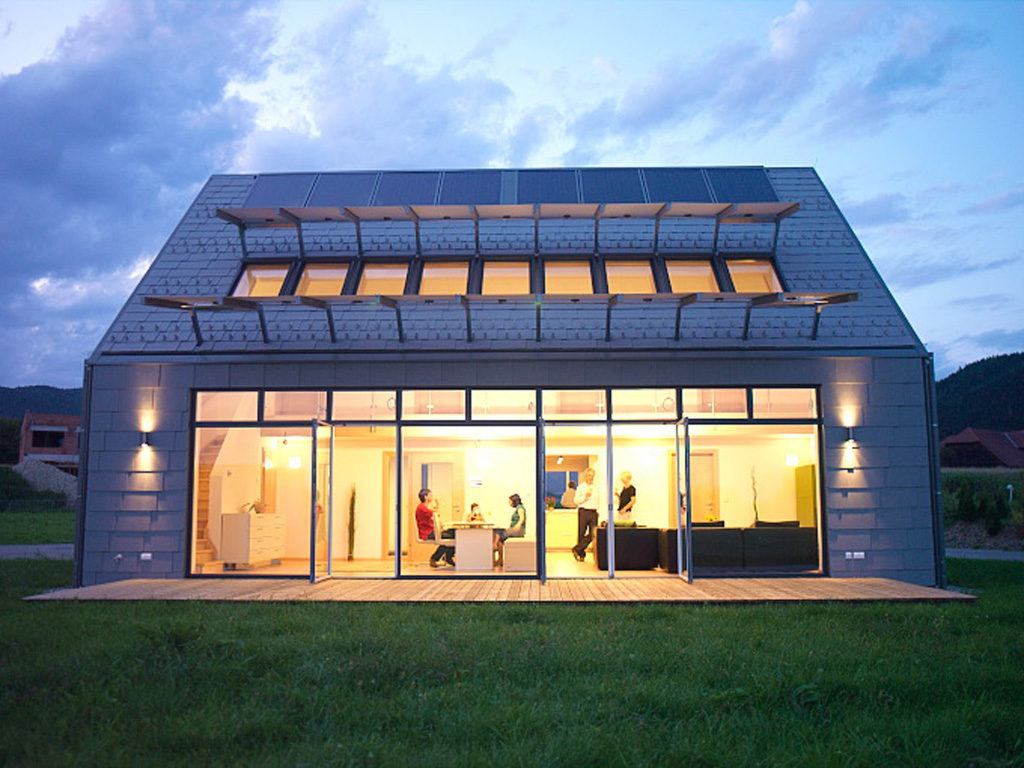Solar-Activehouse
Minimum-energy building design with windows in passive house quality, living space ventilation with heat recovery and a modern “solar architecture” minimise heating energy demand significantly.
The thermal energy required for heating and hot water generation is produced using the innovative total heating solution SOLAR COMPLEET.The annual operating costs for heating and hot water generation have finally been reduced to zero.
Thanks to photovolatics (PV for short), the solar-activehouse is turned into a small power plant. A four member family consumes an average of 4,500 to 5,500 kWh of electricity per year. With a roof area of 40 m2, in the most favourable scenario, this energy can be generated right on your own roof.
A combination of several roof windows make the solar-activehouse a veritable fountain of light. This provides for highly uniform lighting through the house even in the furthest recesses. A control system opens and closes all the windows in the building individually depending on the interior temperature and CO2 content in the ambient air and on exterior temperature, wind speed and precipitation values.
The current framework conditions for calculating energy performance for the energy performance certificate pursuant to ÖNORM H5055 do not take into account any solar yield from solar collectors even through these lower the actual thermal energy demand. Taking into account the SOLAR COMPLEET total heating solution, the calculated thermal energy demand is decreased by around 80% compared to the standard calculation.
In choosing the materialsto be used, value was attached to the production and life cycle and the effects on a healthy and pleasant interior environment. The most extensive use possible of environmentally compatible building materials was therefore a matter of course.
The solar-activehouse is a concept which combines all the experience and standards, technologies and developments we have at our disposal into a simple system, enhancing and implementing them in such a simple manner that the house is attractive even for the “average” consumer while remaining financially viable. The focuses here are on sound building materials, low environmental impactincluding during construction itself, minimising heat losses (building envelopes, windows, details) andmaximising solar energy production.







